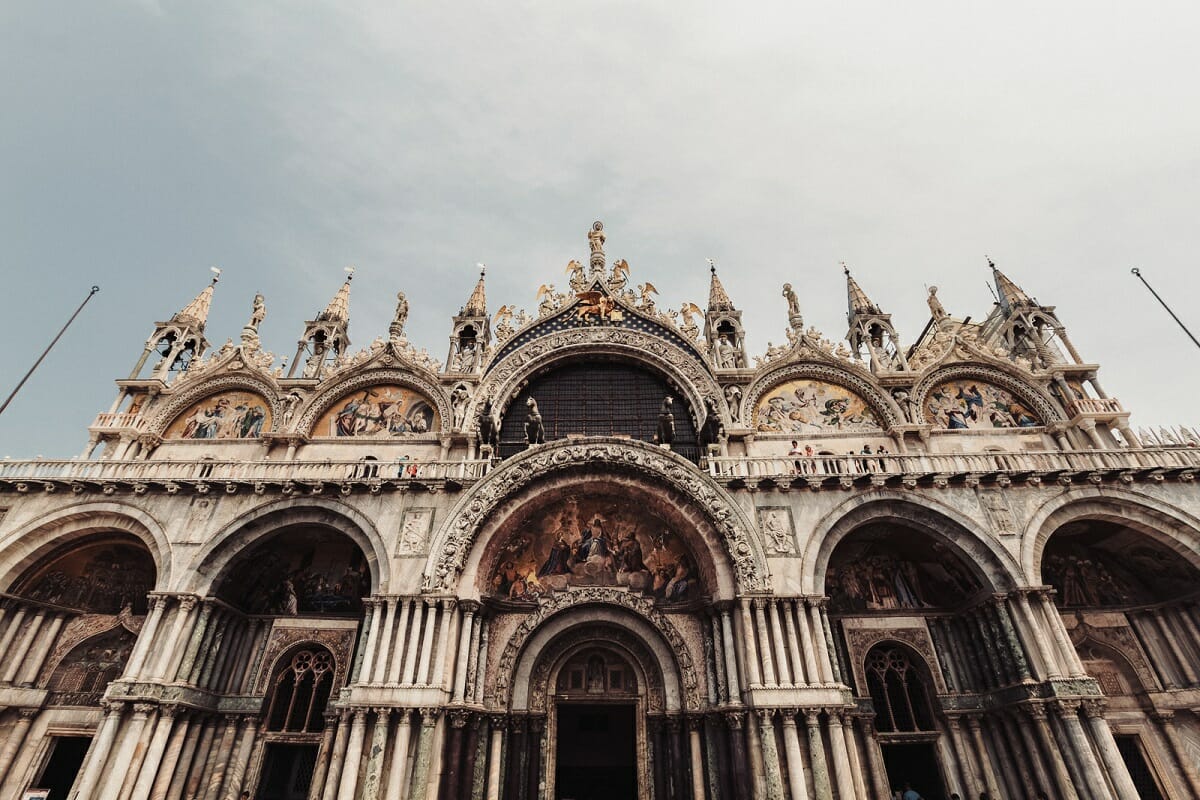
On the surface Venice is beautiful. But, thanks to the fact that the city is filled with signs and symbols, there’s way more to it than meets the eye. From gondolas to flags, almost everything in Venice has a hidden story to tell. Here are three of our favorite Venetian symbols that you can find scattered across the city.
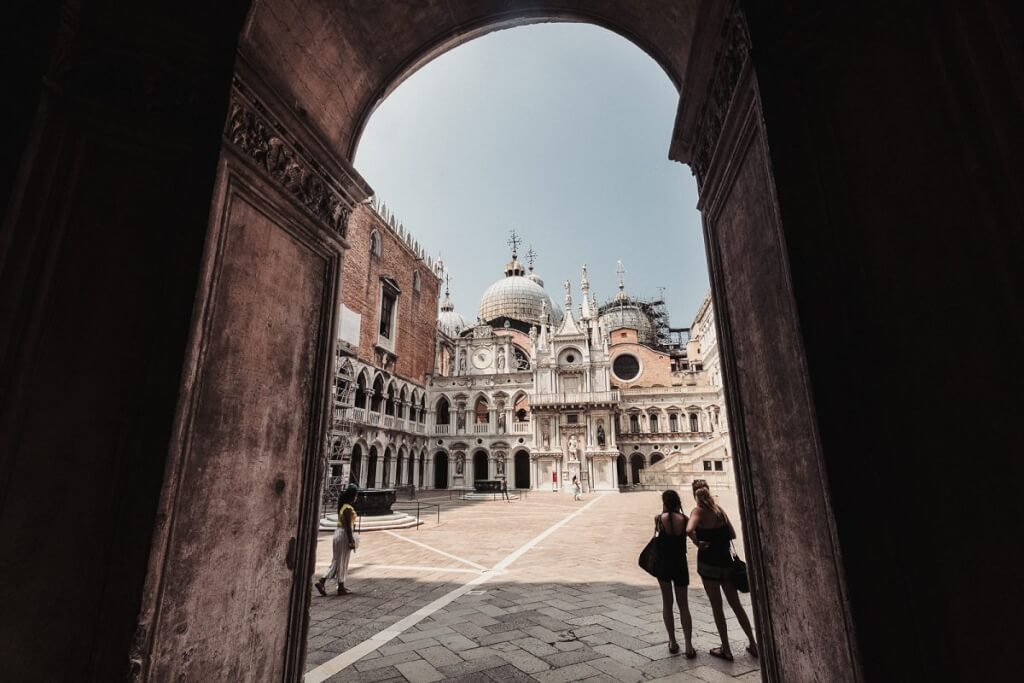
Venice is filled with hidden signs and symbols.
Table of Contents
ToggleHidden symbols of Venice
The meaning behind the gondola
It’s a truism to say that the Venetian gondola is a symbol of Venice. But there’s way more to it, because the gondola itself is loaded with symbols and meanings, too!
First of all, there’s the size of the gondola. Every one is exactly 35′ 6″ long and 4′ 6″ wide, but each has one side 10 inches longer than the other. The reason is simple physics: The longer side balances off the weight of the gondolier.
As well as being uniform in length and width, all gondolas are black. The reason? By the 16th-century, there were so many gondolas in Venice, each of different colors, that the canals were starting to look chaotic… so the city passed a law saying they all had to be black!
The mere shape and color of a gondola is a clue to how important these boats were to Venice, if even laws were passed to control them. But there’s even more to the gondola than that; symbols are hidden in its very design.
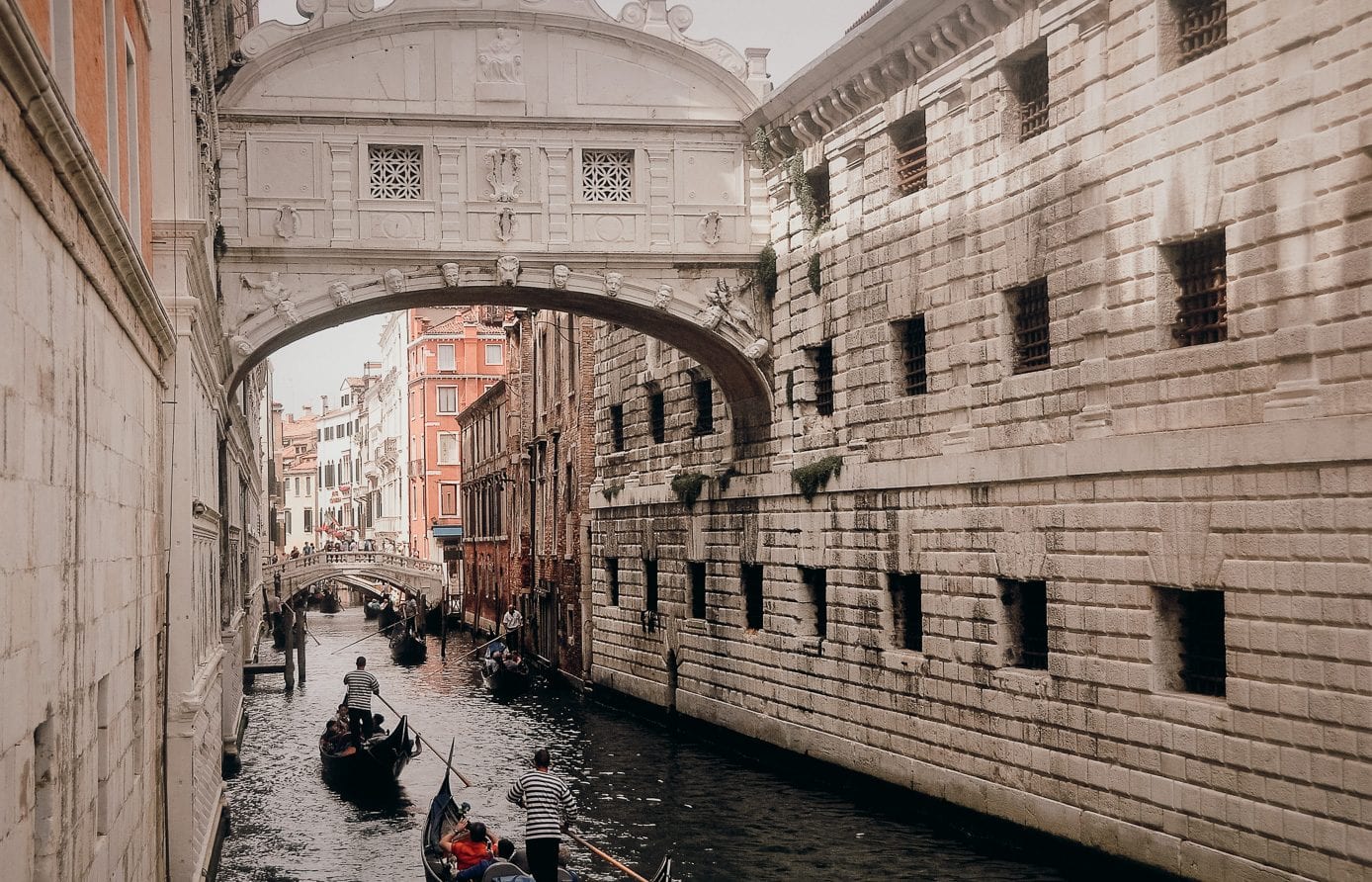
Did you know that the S-curve in a gondola is supposed to mimic the curve of the city’s Grand Canal?
Just take a look at the prow, or ferro, of a gondola. See that metal decoration on the front? It’s not random. In fact, the metal band running down the front has an “S”-shaped curve to it, echoing the shape of the Grand Canal as it cuts through the island of Venice. The six prongs sticking out the front represent Venice’s six sestieri, or districts – and the prong that’s facing backwards symbolizes Giudecca, an island just south of the main Venetian island that’s always been part of Venice.
Meanwhile, the flourish on the top of the six prongs echoes the Doge’s cap. And the little arch that’s made between the flourish and the top of the six prongs? That’s the Rialto Bridge – another symbol of Venice hidden in plain sight!
Cute, huh?
The hidden meanings behind Venetian street names
In lots of Italian towns, street names begin simply with “Via,” like Rome’s famous Via Veneto. In Venice, it’s a little more complicated.
Why? Partly because Venice used to have even more canals than it does today. After the train station was built in the 19th century and visitors started coming without their own boats, the city decided to fill in canals and pave them as streets to create more access. And today? You can “read” that history through the hodgepodge of words Venetians use to refer to their streets.
First, in Venice, the word “calle” is used instead of “via”. Pronounced with the “l” (not as it would be in Spanish, making the “ll” a “y”), a calle is a street that runs between two sets of buildings.
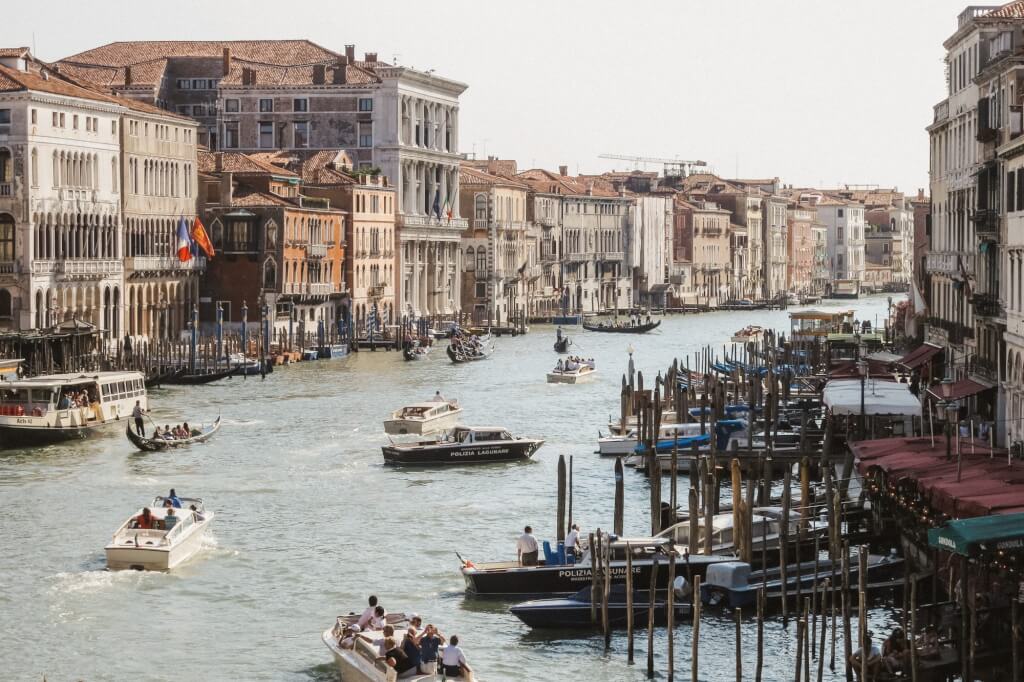
In the past, streets didn’t exist in Venice – homes only had water entrances instead.
But many streets aren’t called a calle. Another one to look out for: “salizada.” Salizada means “paved,” and these streets are those that used to be the most important in Venice – so, when Venice’s few streets were paved in brick, these streets were the first to be paved with the more expensive, gray paving stones that you now see almost everywhere.
Then there is ramo. If you see a sign saying “Ramo —-,” then beware: a ramo was built as a blind alleyway, solely to allow access to homes whose main entrance used to be a canal.
So you’ve got calle, salizada, and ramo. On top of it, there’s ruga. “Ruga,” which literally means “wrinkle,” refers to those streets that were some of the longest in Venice. Ruga Rialto might be the best-known.
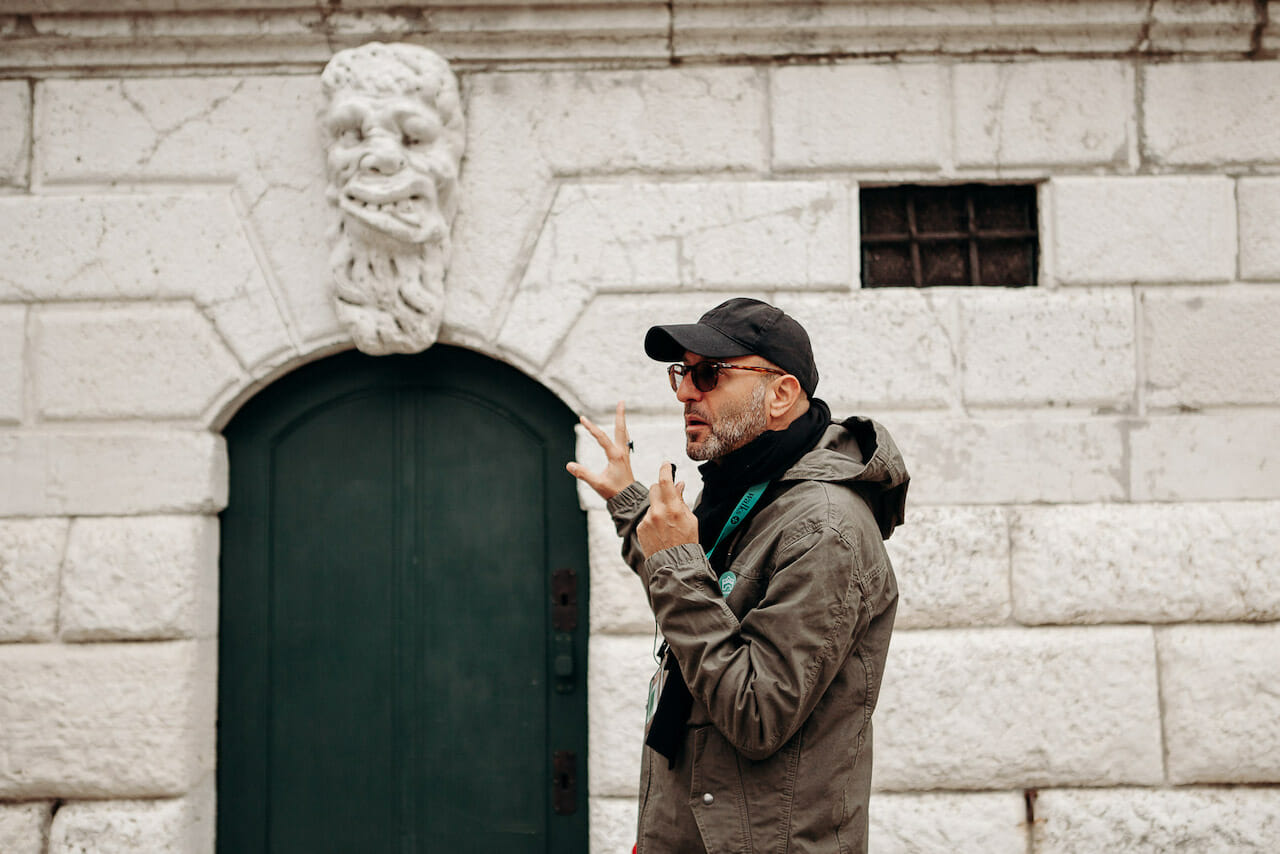
A local guide can provide insights into the mysterious symbols scattered across Venice.
The winged lion: The most famous Venetian symbol of all
Another symbol that you simply can’t get away from in Venice is the winged lion. On palaces, statues, and the city’s flags, that lion is just everywhere. But here’s the big question: Why a lion for the maritime republic, and not a fish or seagull?
The reason goes back to the ninth century, when Venetian merchants stole the body of St. Mark the Apostle from his tomb in Alexandria, Egypt. When a storm almost drowned the graverobbers and their precious cargo, it’s said that St. Mark himself appeared to the captain and told him to lower the sails. The ship was saved, and the merchants said they owed their safety to the miracle.
Once they got to Venice and told the story, it didn’t take long for the city to vote him their patron saint. (It helped that another tradition held that St. Mark had himself once stopped on the Venetian coast to avoid a storm – and that an angel then appeared to him, saying the locals would one day venerate him).
What’s usually used to represent St. Mark in Christian iconography? A winged lion.
So keep your eyes open while you’re in Venice. Even the smallest details of what you see have a story to tell.
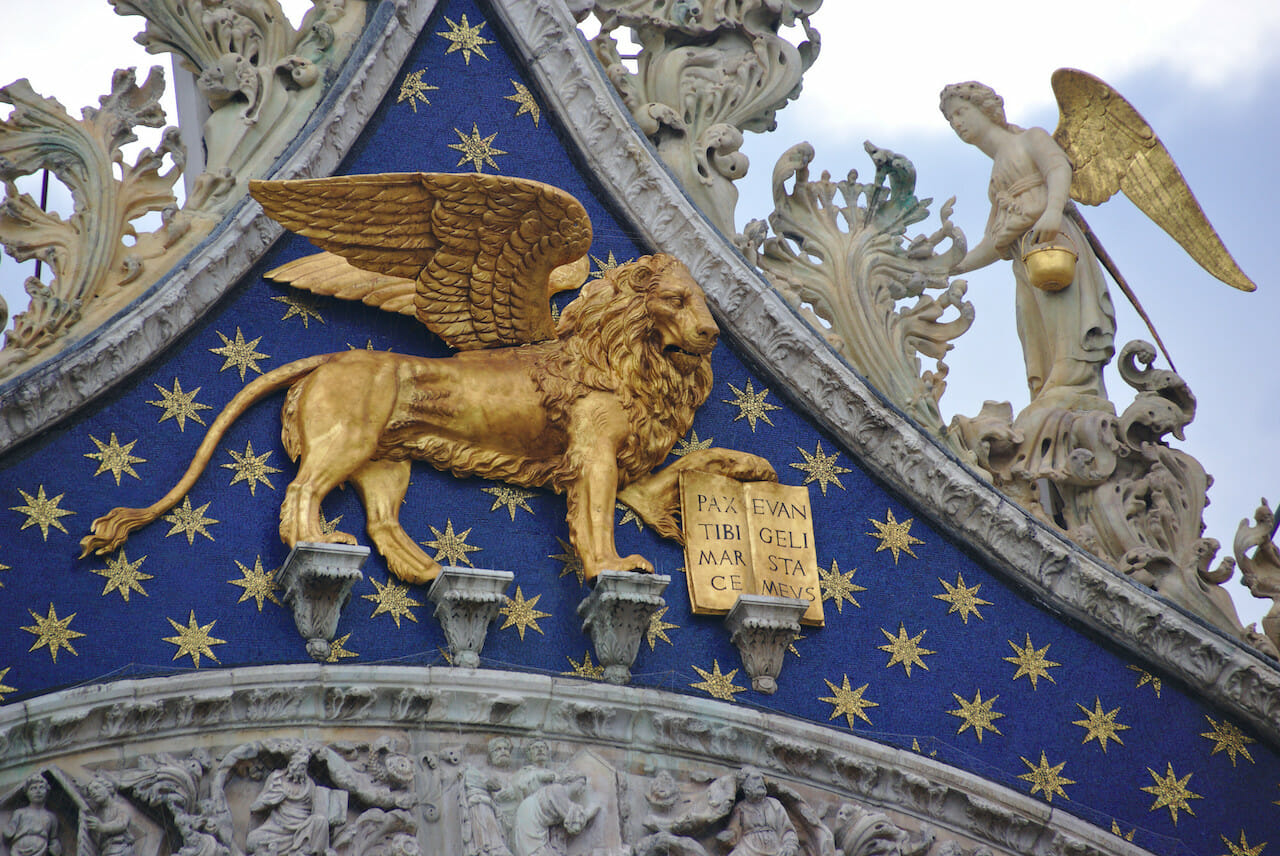
Once you know it’s there, you’ll soon start to notice the winged lion everywhere in Venice. Photo credit: Zoltán Vörös
Update notice: This article was updated on October 11, 2024.
Curious to learn more secrets about the history of Venice? Join us on a tour of the Floating City, where an expert guide will help you navigate Venice’s untold sights and stories.
by Elena L.
View more by Elena ›Book a Tour

Pristine Sistine - The Chapel at its Best
€89
1794 reviews

Premium Colosseum Tour with Roman Forum Palatine Hill
€56
850 reviews

Pasta-Making Class: Cook, Dine Drink Wine with a Local Chef
€64
121 reviews

Crypts, Bones Catacombs: Underground Tour of Rome
€69
401 reviews

VIP Doge's Palace Secret Passages Tour
€79
18 reviews

Legendary Venice: St. Mark's Basilica, Terrace Doge's Palace
€69
286 reviews









